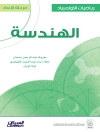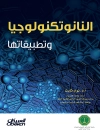This book examines the ways in which China’s universities have changed in the dramatic move to a mass stage which has unfolded since the late 1990s. Twelve universities in different regions of the country are portrayed through the eyes of their students, faculty and leaders.
The book begins with the national level policy process around the move to mass higher education. This is followed by an analysis of the views of 2, 300 students on the 12 campuses about how the changes have affected their learning experiences and civil society involvement. The 12 portraits in the next section are of three comprehensive universities, three education-related universities, three science and technology universities, and three newly emerging private universities. The final chapter sketches the contours of an emerging Chinese model of the university, and explores its connections to China’s longstanding scholarly traditions
Tabla de materias
List of Abbreviations.- List of Figures.- List of Tables.- List of Photos.- Foreword; Robert F. ARNOVE.- Introduction and Acknowledgements; Ruth HAYHOE.- PART I: Overview and Main Themes .- 1 . Understanding China’s Move to Mass Higher Education from a Policy Perspective; Qiang ZHA.- 2. Equity, Institutional Change and Civil Society – The Student Experience in China’s Move to Mass Higher Education; Jun LI.- PART II: Portraits of Three Public Comprehensive Universities. – 3. Peking University – Icon of Cultural Leadership; Ruth HAYHOE and Qiang ZHA, with YAN Fengqiao.- 4 . Nanjing University – Redeeming the Past by Academic Merit; Jun LI and Jing LIN, with GONG Fang.- 5. Xiamen University – A Southeastern Outlook; Ruth HAYHOE and Qiang ZHA, with XIE Zuxu.- PART III: Portraits of Three Education-Related Universities. – 6. East China Normal University – Education in the Lead; Ruth HAYHOE and Qiang ZHA, with LI Mei.- 7. Southwest University – An Unusual Merger and New Challenges; Jun LI and Jing LIN, with LIU Yibin.- 8. Yanbian University – Building a Niche through a Multicultural Identity; Jing LIN and Jun LI, with PIAO Taizhu.- PART IV: Portraits of Three Science and Technology Universities. – 9. The University of Science and Technology of China – Can the Caltech Model take Root in Chinese Soil?; Qiang ZHA and Jun LI, with CHENG Xiaofang.- 10. Huazhong University of Science and Technology – A Microcosm of New China’s Higher Education; Ruth HAYHOE and Jun LI, with CHEN Min and ZHOU Guangli.- 11. Northwest Agricultural and Forestry University – An Agricultural Multiversity?; Qiang ZHA and Ruth HAYHOE, with NIU Hongtai.- PART V: Portraits of Three Private Universities .- 12. Yellow River University of Science and Technology – Pioneer of Private Higher Education; Ruth HAYHOE and Jing LIN, with TANG Baomei.- 13. Xi’an International University – Transforming Fish into Dragons; Jun LI and Jing LIN, with WANG Guan.- 14. Blue Sky – A University for the Socially Marginalized; Jing LIN and Qiang ZHA.- PART VI: Conclusion and Future Directions. – 15. Is There an Emerging Chinese Model of the University?; Qiang ZHA.- Notes on the Authors.- Index.
Sobre el autor
Ruth Hayhoe is a professor at the Ontario Institute for Studies in Education of the University of Toronto.
Jun Li is an assistant professor in international education policy at the Hong Kong Institute of Education.
Jing Lin is a professor of international education policy at the University of Maryland, College Park.
Qiang Zha is an assistant professor at York University.












